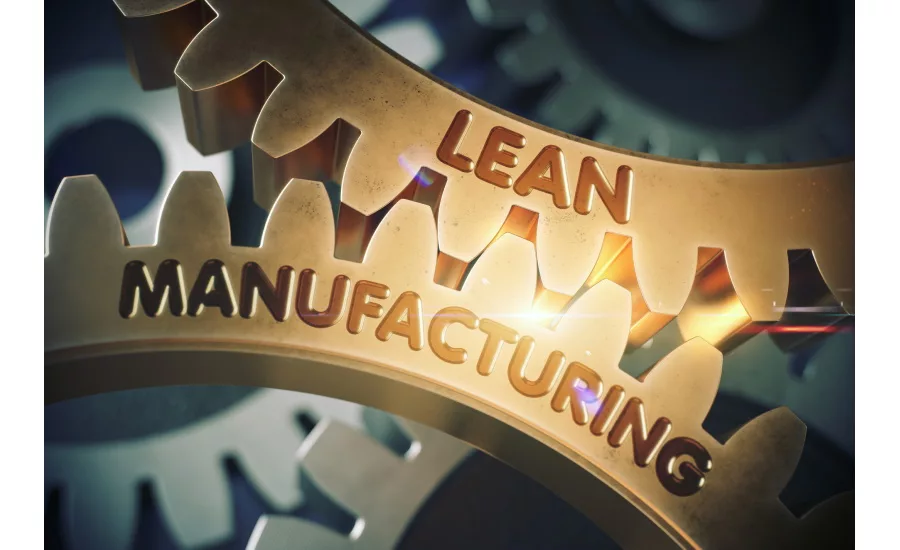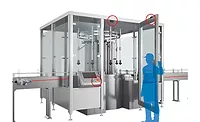Lean Manufacturing
5 common mistakes to avoid while using lean manufacturing to improve efficiency
Understanding lean principles will foster a culture of continuous improvement

Image credit: Getty Images/Tashatuvango
Every industry wants to improve their efficiency, reduce operating costs and increase operating margins. One proven way to achieve these goals is to embrace the principles of lean manufacturing.
Lean manufacturing is the ideology of improving efficiency of the production process by increasing productivity and reducing wastage. It takes inspiration from Toyota’s 1930 operating model dubbed “The Toyota Way.” The adoption of the ideology in the West was spear-headed by John Krafcik, Daniel Jones and James Womack.
Lean manufacturing stands on five core principles:
Value: The production process is geared towards the specific value desired by customers.
Value stream: Determine the value stream for each product and remove all unnecessary steps that do not contribute any value to the customer.
Flow: Once the steps that add value to the customers are identified, make the product flow continuous.
Pull: Pull is introduced between steps that are conducive to continuous flow.
Perfection: Continuous improvement towards perfection. This core tenet is geared to make lean manufacturing part of organizational culture, not just an end goal.
Adopting lean principles in manufacturing means adopting these five core tenets as the driving force for production processes.
Benefits
Lean manufacturing provides a range of benefits for any production process. Some of the key benefits that are delivered by lean manufacturing include:
Inventory reduction—Lean manufacturing helps to make the production process and supply chain highly efficient. This means you need not have a large inventory stockpile costing you.
Labor costs—Lean principles help to make the labor force more productive. This means you have less labor costs relative to the output.
Time reduction—Efficient processes with a productive labor force are able to produce finished goods taking less time.
Space reduction—When unnecessary steps are removed from the process, space on the factory floor is made available.
Quality improvement—The continuous improvement aspect of lean manufacturing is a constant pursuit of delivering higher value to customers. As customers value quality, improving product quality becomes a primary value driver.
Hewlett-Packard implemented some lean principles in four of their divisions. A case study corresponding to the implementation revealed the benefits of the same.
- Reduced inventory by up to 75%
- Reduced labor costs by up to 50%
- Space reduction in plant by up to 50%
- Increase production by 100%
- Increased number of shipments by up to 20%
Common mistakes
Though lean manufacturing has many benefits, companies face some pitfalls during implementation. Here are the 5 common mistakes manufacturers make while implementing lean principles and how to avoid them.
-
Lack of strategy. Operations leaders of a company may take up lean manufacturing because they heard about it in a seminar or it is a buzzword in the industry. They do it without any objectives or aims other than implementing lean manufacturing. This could prove counterproductive to existing processes.
How to avoid: The what and why of lean manufacturing has to be addressed before implementing it in the shop floor. The objectives and expectations have to be well-defined both quantitatively and qualitatively. Implementation must only follow a detailed road map for the same.
When Coca-Cola introduced lean principles into their processes, they first defined the problem. Then they used quantitative techniques to measure and analyze production metrics. They went ahead with implementation only after this detailed analysis. -
Employee participation. Another common mistake also happens from the side of management. They adopt a top-down approach in implementing lean manufacturing. This presents a disconnect between the aims of management and employees. Lean principles cannot be implemented with a top-down approach and such approaches will fail eventually.
How to avoid: Take employees in confidence for successful lean implementation. Make them understand the what, why, and how of lean manufacturing. Helping them with relevant workshops and training would also be helpful. -
Wrong KPIs. Factory operations have a plethora of metrics that could be tracked. Focusing on metrics that do not add value to the customer is a waste of time and resources. It often leads to more problems down the line.
How to avoid: Significant efforts have to be made to identify the metrics that will give maximum benefit to customers. If the problem of a factory is excessive machinery breakdown, maintenance metrics have to be tracked and predictive maintenance could be the way forward. Similarly, choose the right metric for the problems the specific factory faces. -
Lean culture. While implementation, some management thinks of lean principles as some steps to be taken to improve process efficiency. They take no effort beyond some prescribed steps. This is not the way for successful implementation of lean manufacturing.
How to avoid: Inculcate lean principles as part of organizational culture. This should reflect in all processes from hiring employees. These principles are not just for the production division, but are applicable across the different organizational functions. This helps to foster a lean culture within the organization. -
Intermittent improvement. One of the key tenets of lean manufacturing is continuous improvement. But some business leaders shun the principles after some objectives are met. This will eventually lead to degradation in processes and will be a step in the reverse direction.
How to avoid: The principle of continuous improvement has to be inculcated in the employees and management. If asset management was the problem that needed to be addressed with lean principles, it should not stop with reaching some goals. Constant efforts for asset tracking have to be in place even after achieving the initial objective. Continuous efforts have to be in place to improve asset management. Similar approaches have to be taken regarding every problem to be addressed by lean principles.
The culture of continuous improvement
All of the common mistakes that companies make while implementing lean manufacturing is because of a lack of understanding of the lean principles. Once that is accomplished, you will realize building a lean culture is the most important element of successful lean manufacturing. With that in place, improvements in efficiency and waste reduction is inevitable.
For more information, visit Limble CMMS.
Looking for a reprint of this article?
From high-res PDFs to custom plaques, order your copy today!








